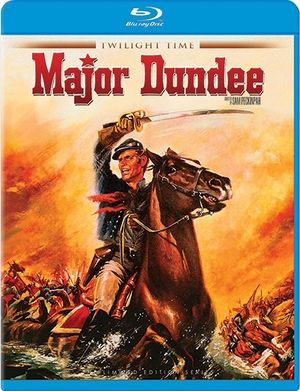If I’m not mistaken there are two versions on the Blu-ray, one with a running time of 136 minutes, one with a running-time of 122 minutes (approx).
This is the part of my review about the different versions:
[i]= The Different Versions =
When Major Dundee went into post-production, Peckinpah was very busy courting one of his actresses, Begonia Palacios, in the movie the young Mexican girl who has an overnight affair with Tim Ryan. The girl’s family was against it, but Sam was madly in love and pushed through. He would indeed marry her the next year. In the meantime Columbia had hired three editors - William Lyon, Don Starling and Howard Kunin - to look at the 40,000 feet of film Sam had shot in Mexico. Peckinpah joined the group but almost immediately fell out with them. According to Ericsson, this is the moment that Sam ‘lost his movie’: he should have tried to win the studio for his way of thinking, but instead he infuriated everybody with his unwillingness to compromise.
However, the contract guaranteed him the right to make a first cut of the movie and to screen it in two try-outs. According to Webble, Peckinpah pruned the film down to 2 hours, 41 minutes (161 minutes), but then wanted to put 7-10 minutes (he had previously cut) back into it (which would make his ‘final cut’ 168-171 minutes long). Other sources mention a version of 156 minutes. But Sam didn’t get his screenings; instead Bresler took the film to New York and showed it to a group of exhibitors (owners of theatre chains). When he came back he told the film was too long and that he, Bresler, and his editors would cut down the film to acceptable length. Sam was denied access to the studio and without him the Bresler team brought the film’s running time back to about 136 minutes.
The studio still wasn’t satisfied, and cut the movie further down to 122 minutes, breaking its narrative backbone and creating a lot of inconsistencies.[/i]
Second quote:
The version that finally hit theaters (122 mns), was dreadful, fragmented and incoherent. The extended version, released on DVD in 2005, is a major improvement. It runs for about 136 minutes and must be close to what Bresler and his editors concocted in 1965, before the studio ordered to cut the movie down to two hours.
So the 136 mns is the best available of the movie (longer versions are lost)
The 122 mns version is a disgrace.
Conclusion: Do as Stanton says and watch the longer version.

